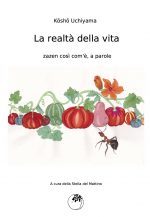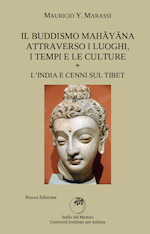If the Buddha was still subject to aging, sickness, and death when he died, what were his enlightenment, emancipation, and Nirvana? This is a very important and essential question in order to understand what the Buddha taught. I think Uchiyama Roshi’s poem reveals a very clear answer to this question through the reference to his own experience of aging, sickness, and dying. When Uchiyama Roshi wrote the poem, he was about seventy years old and was very sick. Sometimes we worried that he might be dying. Being poor, aging, sick, and dying were Uchiyama Roshi’s actual reality, but he found another side of his life that is never poor, never aging, never sick, and never dying. We need to find that our ordinary life in which we have to be aged, sick, and dying is at the same time the Buddha’s life that is never aging, sick, and dying.
During the course of many sesshins and much thinking since Uchiyama Roshi’s death, I have started to understand that my vision of Sanshin is not simply “my” vision anymore. Ultimately speaking, Sanshin is for American people who are inspired to practice zazen according to Shakyamuni Buddha’s, Dogen Zenji’s, and Sawaki and Uchiyama Roshis’ teachings and also are inspired to create the most suitable style of zazen practice in this country for the 21st century.
As I have said before, I have two goals for Sanshin Zen Community at this point. First, I recommend that the Community work to establish a practice center for a small number of resident practitioners and visitors and where my family and I might also make our home. Second, I wish Sanshin to continue to form and strengthen the network of various Zen groups and individual practitioners interested in Sanshin practice. In order to actualize this vision, we need to work on making a long-range plan and conduct associated fundraising.
The growing interest in Sanshin practice motivates practitioners to attend sesshins, sometimes from great distances. Relationships are beginning to build among Sanshin practitioners from a variety of regions. The regional focus of the Community is beginning to emerge in personal relationships. If practitioners are interested, it will be possible to begin offering activities, like those I envision at a Sanshin practice center, during scheduled practice events. For now, I look forward to sharing with you my practice and perspectives and to providing opportunities for practitioners to learn from, and participate in, my translation work.
As the Community proceeds with acquisition of property for the practice center while making an effort to strengthen the network of Sanshin Zen Community practitioners and Zen Centers, I would like to discuss some questions that are important to me and probably to everyone who joins or supports Sanshin’s practice.
Is it possible to work on fundraising without being pulled by the three poisonous minds (greed, angerhatred, and ignorance)?
Can fundraising be true practice of the Dharma as an expression of the three minds or sanshin (magnanimous mind, tender or parental mind, and joyful mind)?
In considering these questions, I am reminded that February 15th was Shakyamuni Buddha’s Parinirvana Day. Before the Buddha died, he preached his last teaching, which is recorded as the Sutra of Last Discourse (Yuikyogyo). In his last teaching, the Buddha said that his students must follow the eight points of awakening of a great person (hachidainingaku). Dogen Zenji’s last writing before his death also dealt with these eight points (Shobogenzo Hachidainingaku). The first two of the eight points are “small desire” (shoyoku) and “knowing enough” (chisoku). A commentary on the sutra defines “small desire” as not pursuing the many unnecessary things that one has not yet gained. “Knowing enough,” means to be satisfied with the things one already has.
| « Part I |
Part III » |
Se volete, lasciate un commento.
You must be logged in to post a comment.







